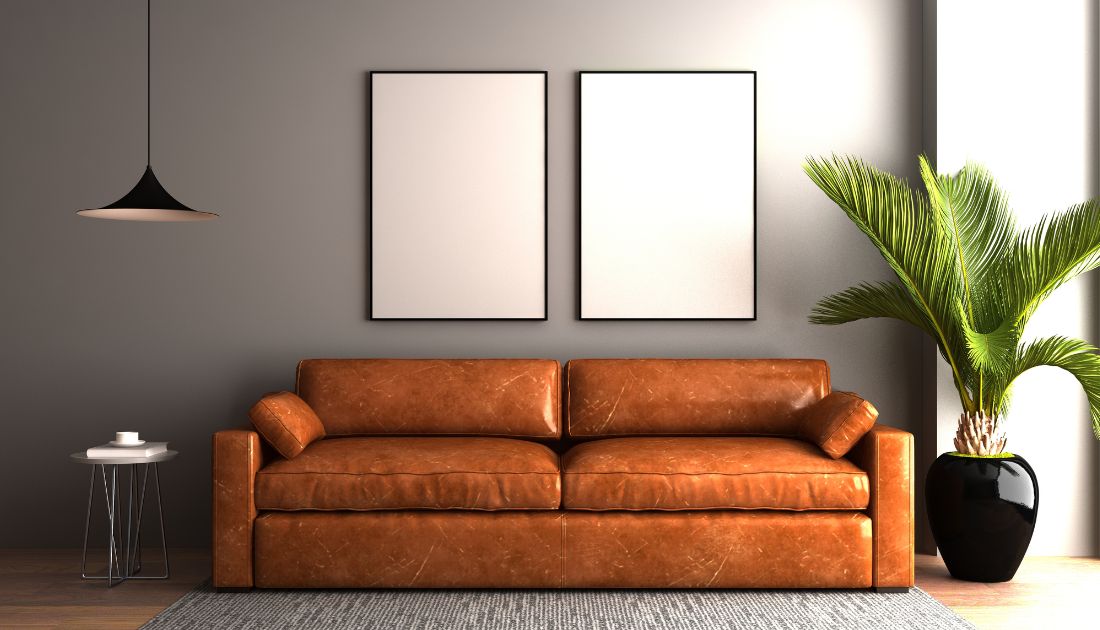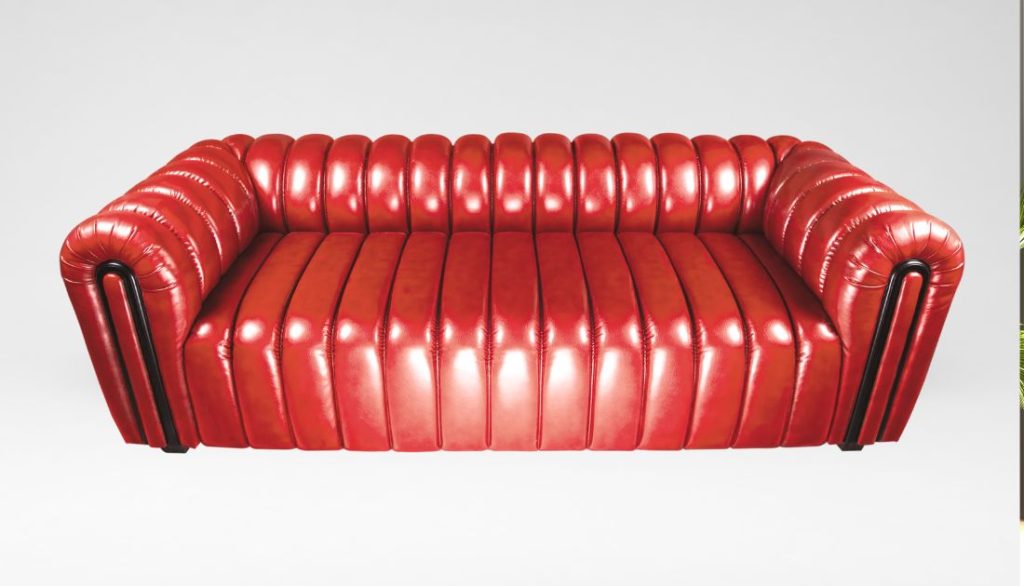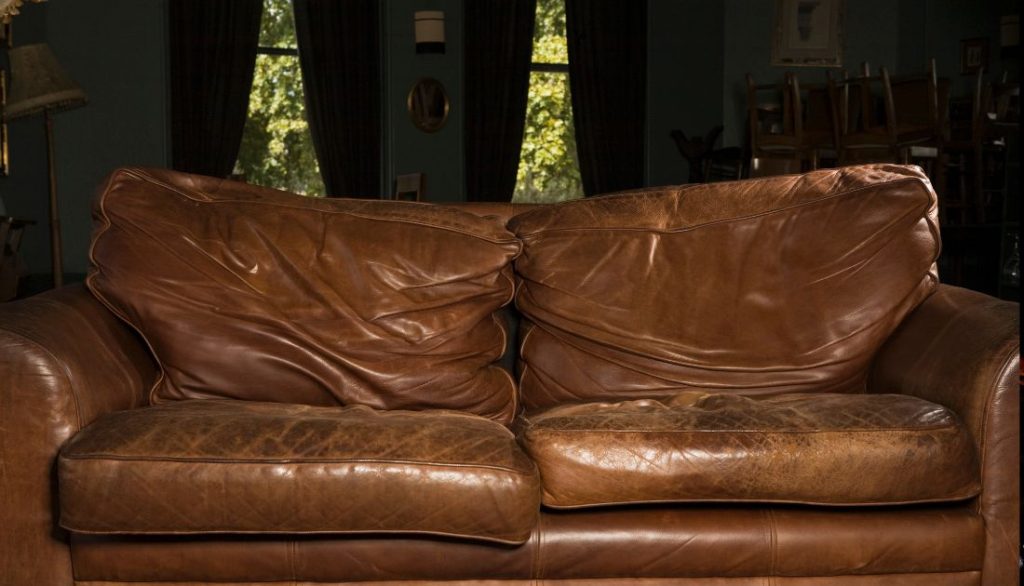Table of Contents
Like a couch, leather furniture adds a touch of luxury and elegance to any living space. To keep it looking beautiful and to make it last longer, you need to condition the leather regularly. With so many leather conditioners available, choosing the best one can feel overwhelming.
This ultimate guide will help you understand what to look for in a leather conditioner, how to use it properly, and tips for keeping your leather in great shape. Whether your couch is a new purchase or an old favorite, this guide will help you take the best care of it.
Understanding the Different Types of Leather
- Full Grain Leather: Known for its durability and natural beauty, full grain leather is made from the top layer of the hide. It retains the original texture and imperfections, making each piece unique.
- Top Grain Leather: Slightly less durable than full grain, top grain leather has been sanded or buffed to remove imperfections. It is still high quality and offers a smoother look.
- Genuine Leather: Often misunderstood as low quality, genuine leather is actually made from real animal hide. While it may not be as premium as full or top grain, it can still be a good choice for furniture.
Understanding the type of leather you have is essential when choosing a leather conditioner for your couch. Each type requires specific care to maintain its appearance and longevity.
Clearing up Myths & Misconceptions
Clearing up myths and misconceptions about leather conditioners for couches is crucial for proper leather care.
Many believe all conditioners are the same, but this is untrue. Different leather types require specific conditioners to maintain their quality and appearance.
Another common myth is that leather doesn’t need conditioning if it doesn’t look dry. In reality, regular conditioning prevents cracking and preserves the leather’s natural oils, extending its lifespan.
Some also think homemade remedies like olive oil are effective, but these can damage leather over time. Understanding these misconceptions helps select the right products, ensuring that leather furniture remains in excellent condition for years.
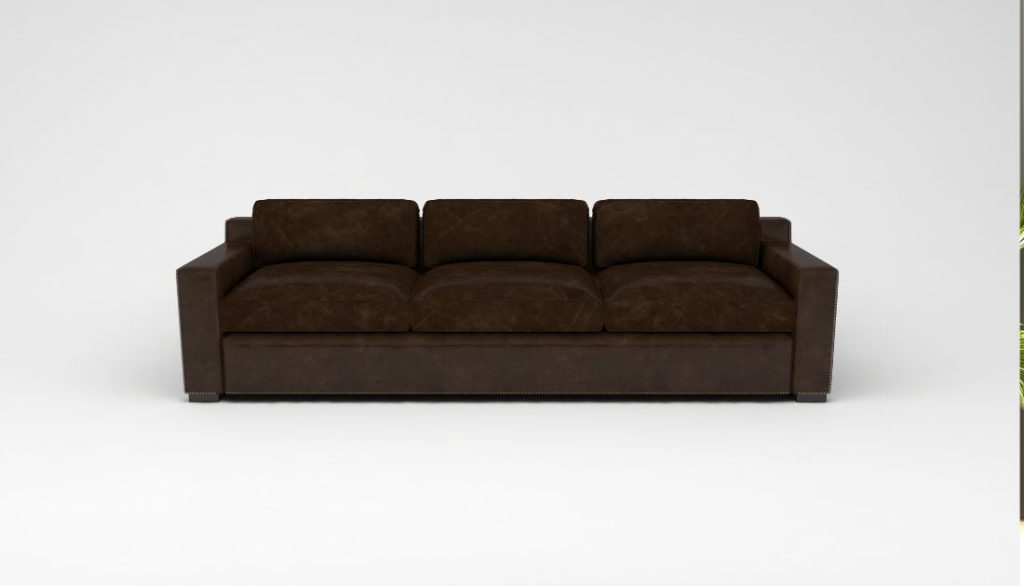
History of Leather Conditioner for Couches
The history of leather conditioner for couches dates back centuries, evolving alongside the craft of leatherworking.
Ancient civilizations like the Egyptians and Greeks used natural oils and fats to preserve and soften leather. As leather production advanced, so did the methods of conditioning.
By the 19th century, industrialization brought about more refined leather treatments, with specialized products emerging in the market. The mid-20th century saw the development of chemical conditioners designed to penetrate deeper and offer longer-lasting protection.
Today, leather conditioners are formulated with advanced technologies, balancing natural and synthetic ingredients to provide optimal care for leather furniture. This evolution reflects a continuous effort to enhance the durability and aesthetics of leather products.
Factors to Consider When Choosing a Leather Conditioner
- Leather Type: Consider the type of leather your couch is made from. Different conditioners are tailored for specific types, such as full-grain, top-grain, or bonded leather.
- Purpose: Determine if you need a cleaner and conditioner in one product or only require a conditioning treatment. Some products offer both cleaning and conditioning properties.
- Ingredients: Look for natural ingredients like beeswax or lanolin, which can nourish and protect the leather without leaving harmful residues.
When selecting a leather conditioner for your couch, consider these factors to ensure you choose the best product suited to your needs and prolong the life of your furniture.
Top Features to Look for in a Leather Conditioner
- Natural Ingredients: Opt for a leather conditioner that contains natural oils like coconut, jojoba, or lanolin. These ingredients are gentle on the leather and help condition it effectively without causing any damage.
- UV Protection: Look for a conditioner that offers UV protection to prevent your couch from fading or drying out due to exposure to sunlight. This feature is essential if your couch is near windows or receives direct sunlight.
- Moisturizing Properties: Choose a leather conditioner with moisturizing properties to keep your couch soft and supple. A good conditioner should hydrate the leather, preventing it from cracking or developing unsightly wrinkles.
Best Leather Conditioners for Genuine Leather Couches
Choosing the right conditioner is key when it comes to maintaining the luxurious look and feel of your genuine leather couch. Here are some top picks that will keep your leather sofa looking its best:
- Chamberlain’s Leather Milk: This popular conditioner is known for nourishing and protecting all types of leather, including genuine leather couches. It helps restore moisture, prevent cracking, and maintain a soft touch.
- Lexol Leather Conditioner: Another highly recommended option, Lexol’s formula penetrates deep into the pores of the leather to provide long-lasting hydration and protection against wear and tear.
- Leather Honey Leather Conditioner: A favorite among leather enthusiasts, this conditioner is ideal for treating older or worn-out couches. Its non-toxic formula rejuvenates dried-out leather and brings back its natural shine.
By using any of these high-quality conditioners on your genuine leather couch regularly, you can ensure that it stays in pristine condition for years to come.
Best Leather Conditioners for Faux Leather Couches
When maintaining faux leather couches, choosing the right conditioner is key. Here are some top picks:
- 303 Products Aerospace Protectant: This versatile product conditions faux leather and protects against UV damage.
- Chemical Guys Leather Cleaner and Conditioner Kit: This kit is formulated for synthetic materials and cleans and moisturizes without leaving residue.
- Weiman Leather Wipes: Convenient and easy to use, these wipes effectively clean and condition faux leather with a streak-free finish.
With these recommended products, you can keep your faux leather couch looking its best for years while protecting it from daily wear and tear.
How to Properly Condition Your Leather Couch
- Clean the Surface: Before conditioning your leather couch, it’s essential to clean it first. Use a gentle leather cleaner or a mixture of mild soap and water to remove any dirt, dust, or spills from the surface.
- Apply the Conditioner: Once the leather is clean and dry, apply a small quantity of high-quality leather conditioner onto a soft cloth. Gently rub the conditioner in circular motions all over the couch, ensuring even coverage.
- Buff and Dry: After applying the conditioner, let it sit for a few minutes before buffing off any excess with another clean cloth. This will help ensure that the conditioner fully absorbs into the leather, leaving it looking shiny and rejuvenated.
By following these simple steps regularly, you can keep your leather couch looking fresh and feeling supple for years.
Common Mistakes to Avoid When Conditioning Leather
- Using the wrong product: One of the biggest mistakes people make when conditioning leather is using the wrong product. Not all leather conditioners are created equal, and using the wrong one can do more harm than good.
- Over-conditioning: Another common mistake is over-conditioning your leather furniture. While moisturizing leather is important, applying conditioner too frequently can cause buildup and discoloration.
- Skipping spot testing: Always do a spot test before applying any conditioner to your leather couch. This will help you avoid any potential damage or unwanted effects on your furniture.
Tips for Maintaining Your Leather Couch in Between Conditioning
- Keep it clean: Regularly dust and vacuum your leather couch to prevent dirt and debris buildup, which can cause scratches and wear over time.
- Avoid direct sunlight: Sunlight can fade and dry out leather, so position your couch far from windows or use curtains to block out harsh rays.
- Use a leather-safe cleaner: To avoid damaging the material, use a cleaner specifically designed for leather when cleaning spills or stains.
Remembering these simple tips will help keep your leather couch looking its best in between conditioning sessions.
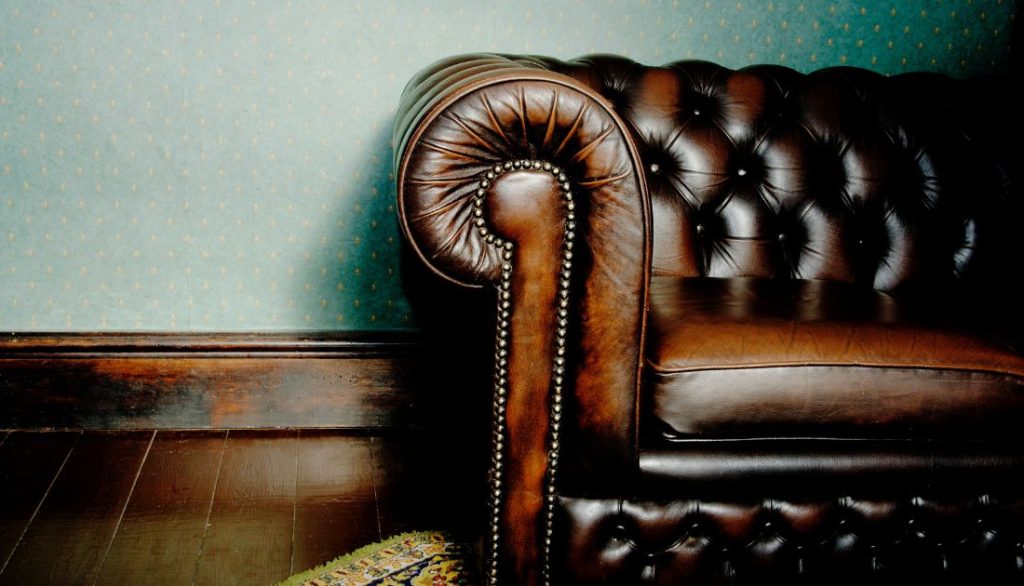
FAQs
What is the best thing to clean leather couches with?
The best thing to clean leather couches with is a mild, pH-balanced leather cleaner designed for furniture of leather. These cleaners are formulated to remove dirt and grime without damaging the leather.
Mix a few drops of mild dish soap with distilled water for a DIY solution. Always test any cleaner on a spot or hidden area first to ensure it doesn’t damage the leather. Wipe the surface with a soft microfiber cloth, and avoid soaking the leather gently.
Can you use Dawn soap to clean a leather couch?
Yes, you can use Dawn soap to clean a leather couch, but it should be used sparingly and properly diluted. Mix a few drops of Dawn dish soap in a bowl of distilled water to create a gentle cleaning solution.
Use a soft microfiber cloth to apply the solution to the leather, wiping gently in circular motions. Rinse the cloth frequently and avoid over-wetting the leather. After cleaning, wipe the couch with a damp cloth to remove any soap residue, then dry it with a clean towel.
How can I make my leather couch look new?
To make your leather couch look new, follow these steps:
- Clean Thoroughly: Use a leather cleaner to remove dirt and stains. Ensure you cover all areas evenly.
- Condition: After cleaning, apply a high-quality leather conditioner to keep the leather soft and supple.
- Buff: Use a soft, dry cloth to buff the leather, restoring its natural shine.
- Repair: Address any scratches or scuffs with a leather repair kit or touch-up pen that matches your couch’s color.
- Protect: Apply a leather protector to guard against future stains and wear.
Regular maintenance and gentle cleaning will help maintain the couch’s appearance over time.
Should you condition a leather couch?
Yes, you should condition a leather couch. Leather conditioner helps keep the leather soft, supple, and hydrated, protecting it from drying and cracking. It also helps maintain the couch’s color and luster. It’s recommended to condition your leather couch every 6-12 months or more frequently if the sofa is in a dry environment or sees heavy use.
How can I moisturize my leather sofa?
To moisturize your leather sofa, use a high-quality leather conditioner. Here’s how:
- Clean First: Clean the leather by wiping it down with a leather cleaner.
- Apply Conditioner: Using a soft cloth, apply leather conditioner in circular motions. Work the conditioner into the leather, ensuring even coverage.
- Let It Absorb: Allow the conditioner to absorb into the leather for a few hours or as directed by the product instructions.
- Buff the Leather: After absorption, buff the leather with a clean, dry cloth to restore its shine.
Regular conditioning will keep the leather moisturized and looking its best.
How To Condition Leather Couches Step by Step
- Clean the Leather:
- Use a cleaner vacuum to remove debris and dust.
- Clean the couch with a wet cloth to remove surface dirt.
- Use a leather cleaner if necessary, following the product instructions.
- Test the Conditioner:
- Apply a small conditioner to an inconspicuous area to test for colorfastness.
- Apply the Conditioner:
- Apply a minimum amount of leather conditioner and rub softly the conditioner into the cloth.
- Rub the chemical conditioner into the leather in small, circular motions, working in sections.
- Let the Conditioner Absorb:
- Allow the conditioner to sit on the leather for at least 15-30 minutes or as per the product instructions.
- Buff the Leather:
- Use a clean, dry cloth to buff the leather, removing any excess conditioner and enhancing the leather’s shine.
- Repeat If Necessary:
- For very dry or neglected leather, repeat the conditioning process.
How Often Should I Use Leather Conditioner for Couches?
Leather couches should typically be conditioned every 6 to 12 months. However, the frequency can vary depending on the following factors:
- Usage: More frequent use may require more frequent conditioning.
- Environment: Dry climates may necessitate more regular conditioning.
- Leather Type: Different leathers have different needs; some may require more frequent care.
Why Use Leather Conditioner for Couches?
Using a leather conditioner for couches is important for several reasons:
- Preserve Flexibility and Softness: Keeps the leather soft and supple, preventing it from becoming stiff and brittle.
- Prevents Cracking: Regular conditioning helps prevent cracks and splits in the leather.
- Restores Natural Oils: Replenishes the natural oils that leather loses over time, maintaining its natural luster.
- Protects Against Wear and Tear: A protective layer helps shield the leather from everyday wear and tear.
- Extends Lifespan: Regular conditioning can significantly extend the lifespan of a leather couch, keeping it looking and feeling good for years.
Types of Leather Conditioners for Couches
Leather conditioners for couches come in several types, each formulated to cater to specific needs and leather types. Here are the main types:
- Cream Conditioners:
- Description: Thick, lotion-like products.
- Use: Ideal for general conditioning and maintaining the softness and flexibility of leather.
- Advantages: Penetrates deeply into the leather, providing long-lasting moisture.
- Oil Conditioners:
- Description: Made from natural oils like mink oil or neatsfoot oil.
- Use: Excellent for revitalizing very dry or stiff leather.
- Advantages: Deeply hydrates and restores suppleness, but can darken lighter leathers.
- Wax Conditioners:
- Description: Contain waxes such as beeswax.
- Use: Primarily for protection against moisture and adding a layer of shine.
- Advantages: Provides a protective barrier and adds a glossy finish, but may not deeply condition.
- Spray Conditioners:
- Description: Liquid formulas in a spray bottle.
- Use: Convenient for quick applications and covering large areas.
- Advantages: Easy to apply and good for regular maintenance.
- Gel Conditioners:
- Description: Gel-like consistency.
- Use: Suitable for precise application and even distribution.
- Advantages: Less messy than oils and creams, and offers controlled application.
- Aerosol Conditioners:
- Description: Pressurized spray cans.
- Use: Provides even coverage and is convenient for quick touch-ups.
- Advantages: Easy application without the need for a cloth or sponge.
